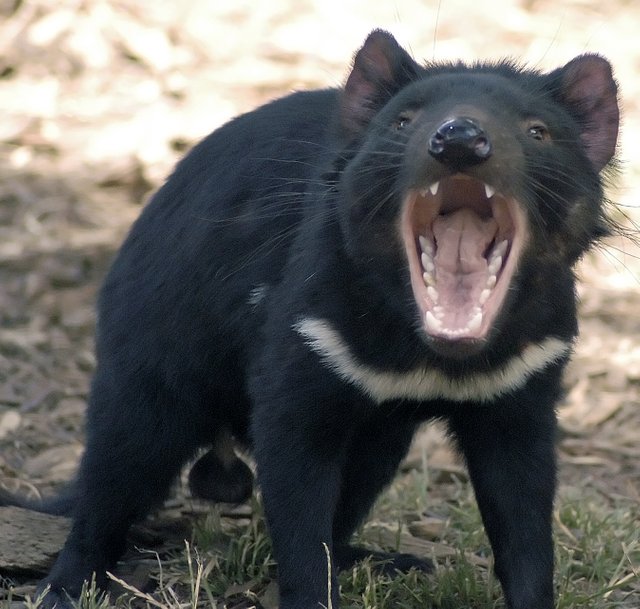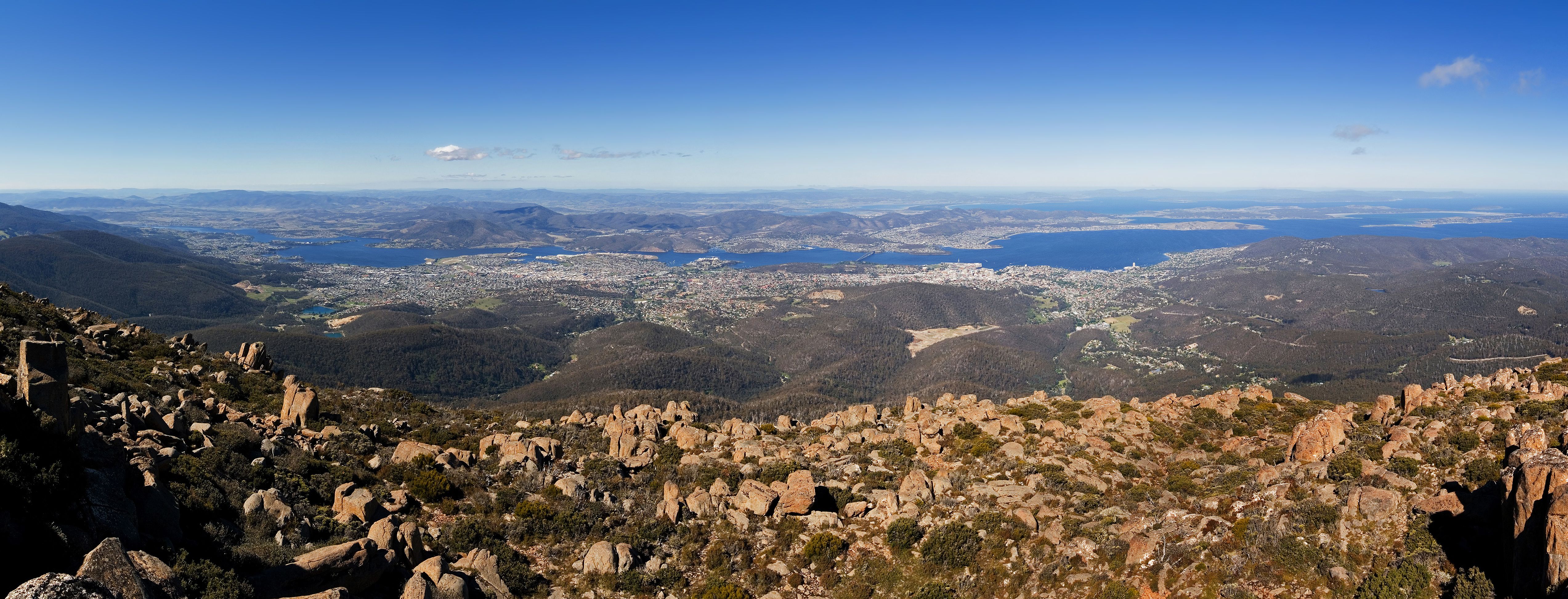The Tasmanian devil is heading towards extinction because of a contagious form of cancer that has already killed over 90 % of the population
The Tasmanian Devil (Sarcophilus harrisii) is a carnivorous marsupial that once inhabited the entire continent of Australia, but is today only found on Tasmania and a few neighboring islands. It is the size of a small dog, and has one of the strongest bites per unit of body mass in the entire animal kingdom, which could be one of the reasons why it became named a devil.

A healthy Tasmanian devil. Image by Wayne McLean, posted with the Creative Commons Attribution-Share Alike 2.5 Generic license.
Their extinction from mainland Australia happened some 3,000 to 4,000 years ago, and for once humans were not the ones responsible, but instead the dingoes (Canis dingo) are blamed. These two species would compete over the same resources, and the dingo would eventually win over the Tasmanian devil, and over time it went regionally extinct. However, there are no dingoes on Tasmania, so it kept on existing there. Climate change, and changes in the culture of the native Australian Aboriginal people are also causes that might have played a part in the lead to their regional extinction on the mainland.
Over 90 % of all the Tasmanian devils have died because of cancer
We humans do tend to think of cancer as a type of random or genetic disease, and most people don’t even know about the fact that there are types of cancers than can spread in the population. One of these contagious forms of cancer is called Devil facial tumour disease, or DFTD for short, and can only affect Tasmanian devils. Once a devil gets the cancer, it will grow big facial tumors. The tumors around the mouth is what will eventually kill it, because this will prevent it from eating once the tumor reaches a certain size.
The DFTD transmits from one devil to another by biting, fighting and mating, and there is currently no know cure. There is however a project in place that aims to create a vaccine, but this might still be years away. Since it was first beginning to be a problem in 1996, Tasmania has a population of 250,000 devils. It faced a steady decline from there on out, and the newest number from 2015 puts it in the range of being less than 25,000 devils left. This means that roughly 90 % of the entire population has died between 1996 and today! It is listed as Endangered by the IUCN Red List due to its declining population.
Click here for an image of a devil that is infected with DFTD. I usually link images to show directly in the post, but this can be a bit disturbing to some, so click it if you are prepared for facial tumors.
How can cancer spread from one individual to another?
There are actually several types of cancer than can spread between individuals, and these are all from cases where an infectious agent such as a virus is behind it. Virus that causes cancer are called oncovirus, and according to estimates from the World Health Organization's International Agency for Research on Cancer, almost 18 % of all human cancers are caused by oncoviruses.
This might sound like a lot, but keep in mind that almost all of these are from the virus itself, and very few cases of human-to-human infection has been observed. And when this does happen, organ donation is the most likely cause, so you won’t get infected with cancer by being around people with cancer.
Can we save the Tasmanian devil?
Let us turn our attention back to the Tasmanian devil, and ask if we are still able to save it from extinction. Having the population decline by 90 % in just short of 20 years is obviously a huge problem, and many people and scientists fear that the cancer will wipe the entire species into extinction. No one knows what the future will bring for the devils, but what we do know is that many scientists are working on creating a vaccine or a cure, and just last year, researchers from University of Tasmania reported some progress on a cure. This means that we should not give up hope just yet, because they might still be able to be saved.
Some conservation groups such as Devil Ark also work on captive breeding populations that are kept away from wild populations to prevent them from getting cancer. As far as I understand, they hope to release these into the wild after the wild population that is infected with cancer is no longer around, which might just be possible.
Thanks for reading
I got a lot of my information from the website of a project called Devil Ark, and you can read about the DFTD here. They are a nonprofit organization that tries to save the Tasmanian devil from extinction by having facilities where they keep animals that are healthy, and use these for breeding programs. I also posted a lot of links in the post, so click on those if you are interested in learning more.
Anyway, thanks for reading my post! Make sure to follow for more posts like this one, and leave a comment below with any questions or comments to the post.
Great post. You know it's funny I was just reading about cervical cancer today, I had never realised that it is spread by a virus (usually during sex), andI had that "aaahhhh" moment of thinking about my own misconceptions about cancer. Interesting to find out that this causes problems for other animals!
Well, you're not alone. Most people don't realize that some types of cancer can be caused by viruses or other microorganisms. The bright side of this is that it is a whole lot easier to prevent compared to the types we get from random genetic problems.
Don't an area I know much about!
I want to go to Tasmania, I had no idea there are no dingos there, learn something every day on Steemit
I'm glad you learned something new! I definitely want to visit Tasmania one day as well ;) It seems like such a magical place!
Hobart looks beautiful too
Oh yeah, it really does!
hope scientist will find solution very quickly. and save them.
Yeah, that's what I hope as well. Thanks for your comment :)
Great post @valth :) I love those little guys
Thank you. Yeah, they're pretty cool creatures!
The following link is Ted Talk about the contagious cancer found in Tasmanian Devil
https://www.ted.com/talks/elizabeth_murchison
Thanks for the link, @jasonpeng! I'll make sure to check it out :)
The following Youtube video was taken from Los Angeles Zoo. It is interesting to see how Tasmanian Devils walk.
I agree with you
@originalworks
The @OriginalWorks bot has determined this post by @valth to be original material and upvoted it!
To call @OriginalWorks, simply reply to any post with @originalworks or !originalworks in your message!